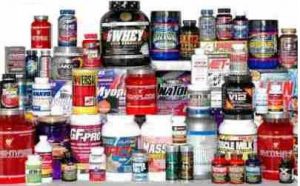 Loaded with nutrients milk is a nutritious beverage that provides nutrients like protein, Vitamin A, B1, B2, B12, and D, potassium, calcium and magnesium.
Loaded with nutrients milk is a nutritious beverage that provides nutrients like protein, Vitamin A, B1, B2, B12, and D, potassium, calcium and magnesium. Cow Milk vs. Buffalo Milk: Pros and Cons
Both cow as well as buffalo milk have their own health benefits, but they differ in composition as well as nutrients.- Cow milk contains lower amount of fat compared to buffalo milk. Cow milk has 3-4 percent fat, while buffalo milk has about 7-8 percent.
- Buffalo milk contains 10-11 percent more protein than cow milk. Buffalo milk is usually not recommended for infants and older people.
- Because of more fat and proteins, buffalo milk also contains more calories (1 cup contains 237 calories), while 1 cup of cow milk contains 148 calories.
- Buffalo milk takes longer to digest and keeps you fuller for longer period of time. Cow milk has more water (almost 90%) so its a good way to increae your water intake.
- Buffalo milk is more creamy and is preferred for making sweets, khoa, dahi, paneer, kheer, payasam, malai, kulfi, and ghee.
Right Ways to Consume Milk
Here’s how milk should be consumed:- Avoid having cold Milk straight out of the refrigerator. Always boil your milk before consumption.
- Heating the milk makes it more digestible for human consumption. Avoid having Milk along with curd or salt or meat. Almonds, rice or dates goes better along with milk.
- Quality of milk depends on how the cattle are treated. Milk from animals that are treated well and fed organically are of much better quality.
- You may have warm milk with pinch of turmeric or black pepper, cinnamon stick, ginger or cardamom to reduce mucus-causing effects.
How to test milk at your doorstep?
Natural Milk is the most wholesome nutrition for your child. However, as per an FSSAI survey, more than 68% of milk in India is adulterated. Milk typically travels 500-1000 kms and takes up to 2 weeks to reach your doorstep. Adulterants such as Urea. Caustic Soda and Detergent are added to the milk to control acidity and kill bacteria. Worried about milk adulteration? You get kits nowadays that you can use to test the quality of the milk you consume.You can use these milk adulteration testing kits to test for adulterants such as urea, starch, and detergent at your own home.
Genuine milk producers source natural cow and buffalo milk from farms located nearby and delivered fresh within 24-36 hours of milking. They add no milk powder or any preservatives.
Milk is pasteurized once, heated to 74°C and chilled to 4 degree Celsius to kill harmful bacteria and retain good bacteria.
The milk is tested on several different parameters by an FSSAI approved external lab and some even send quality report to your doorstep every 15 days.
Do NOT give cow’s milk to toddlers below one year: Experts
Cow’s milk is harmful for toddlers below one year, causes allergic diseases, including in the respiratory and digestive system, as they cannot tolerate protein in the milk. Its low concentration of iron may also cause anemia.
This may probably come as a surprise to most parents. While parents in urban areas do not feed cow’s milk to infants, infants are fed cow milk in rural India as awareness among people is low.
“Though cow’s milk is associated to our culture for ages, it should not be given to toddlers below one year… It may put a strain on the infant’s immature kidney and is also difficult to digest,” said Nandan Joshi, Health and Nutrition Science expert, Danone India.
Allergy symptoms vary and may affect several organ systems such as skin, digestive or the respiratory tract, possibly resulting in skin rash, eczema, vomiting, diarrhoea, colic, wheezing or excessive crying.
Happy Cows May Give More Calcium-Rich & Nutritious Milk
A new study suggests that happier cows are more likely to give you more nutritious Milk with higher levels of calcium.
Worldwide, the demand for milk that is rich in calcium is high. Dairy products such as milk, cheese and yoghurt are primary sources of Calcium. However, this demand has been taking its toll on milk-producing cows as evident from the fact that a large number of dairy cow population suffers from hypocalcaemia — in which calcium levels are low.
That is why this study is of greater significance.
A team of researchers from the University of Wisconsin-Madison, US investigated the potential for serotonin (a naturally occurring chemical commonly associated with feelings of happiness) to increase calcium levels in both the milk and blood of dairy cows.
The team infused a chemical that converts to serotonin into 24 dairy cows, in the run up to giving birth.
Half the cows were Jersey and half were Holstein — two of the most common breeds. Calcium levels in both the milk and circulating blood were measured throughout the experiment.
While serotonin improved the overall calcium status in both breeds, this was brought about in opposite ways.
Treated Holstein cows had higher levels of calcium in their blood, but lower calcium in their milk (compared to controls).
The reverse was true in treated Jersey cows and the higher milk calcium levels were particularly obvious in Jerseys at Day 30 of lactation — suggesting a role for serotonin in maintaining levels throughout lactation.
“By studying two breeds we were able to see that regulation of calcium levels is different between the two. Serotonin raised blood calcium in the Holsteins, and milk calcium in the Jerseys. We should also note that serotonin treatment had no effect on milk yield, feed intake or on levels of hormones required for lactation,” said the researchers.









Leave a Reply